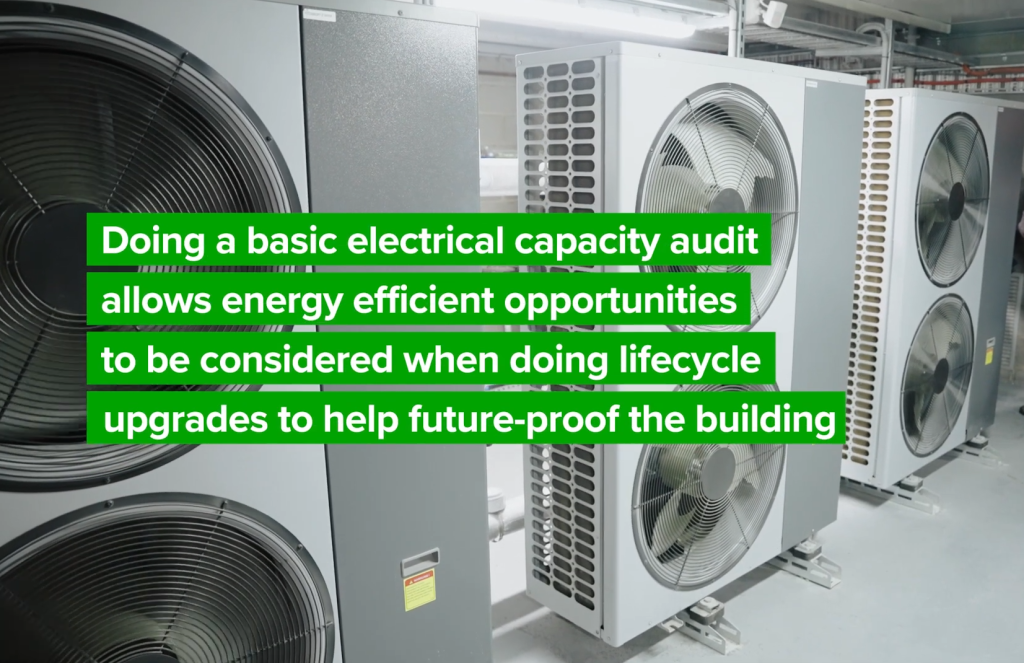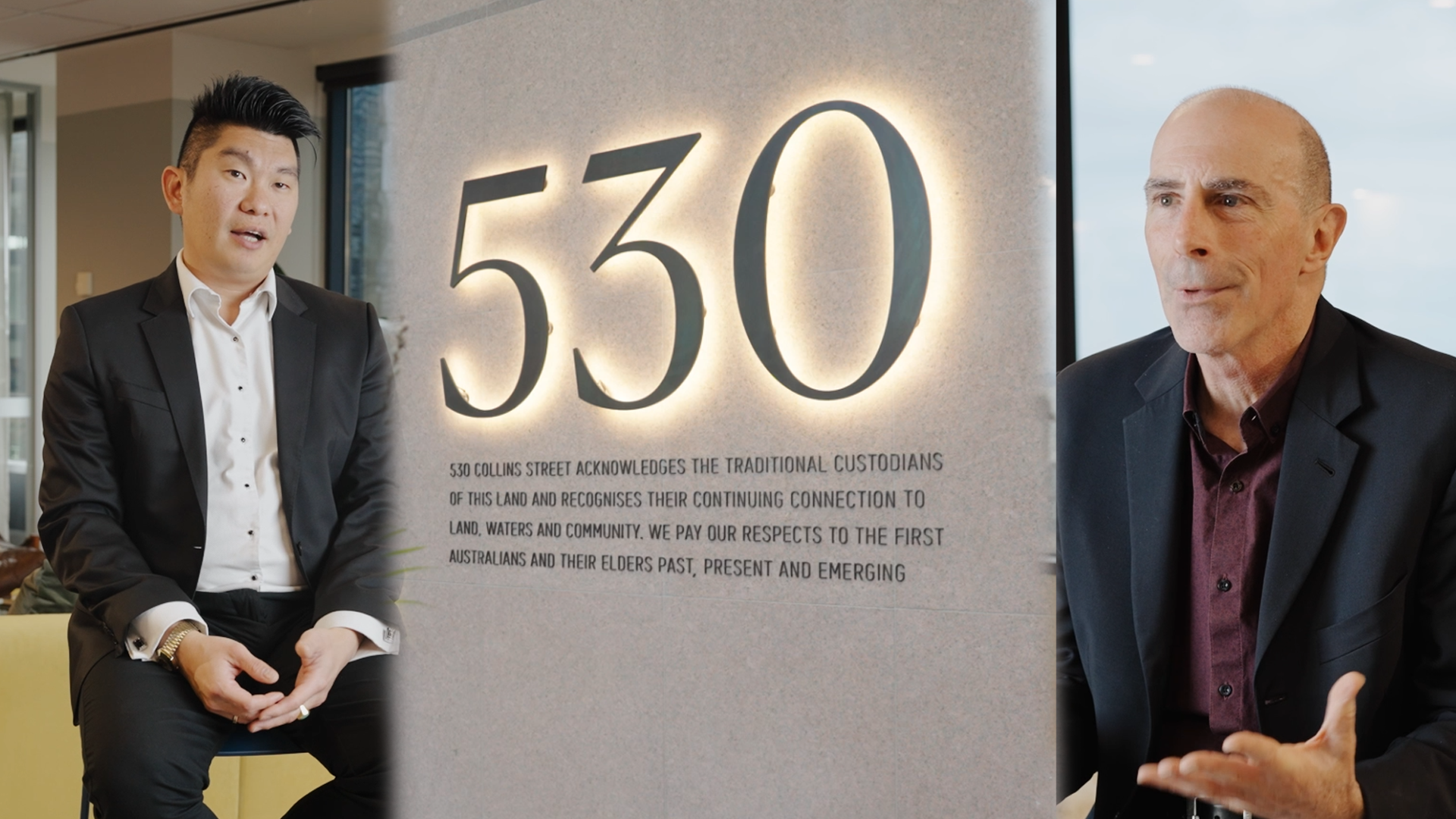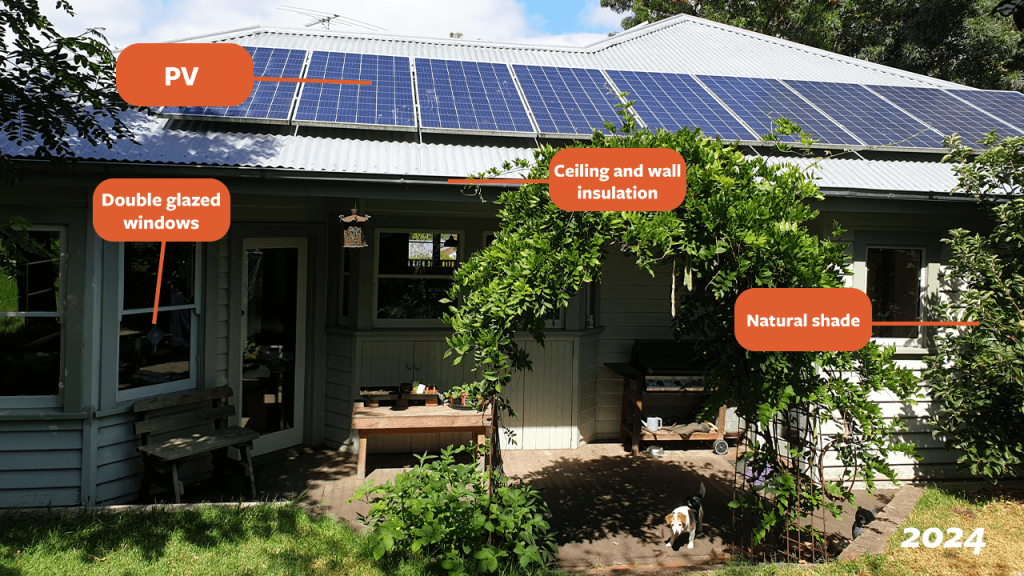The GPT Group are an Australian industry leader in the sustainability of large commercial buildings. A good example is 530 Collins Street in Melbourne, where electrification is enabling a change in how and when energy is used. GPT’s commitment to their ultimate goal of Climate Neutrality is founded on four key pillars: Climate Response, Nature Readiness, Resource Circularity and Water Neutrality
A2EP’s members visited the site to see first-hand, how the large end-of-trip facility in an existing building has transitioned away from gas hot water. The site now using a hot water heat pump system, a major upgrade that improves energy efficiency and supports their broader sustainability efforts.
To understand this project, we spoke with two experts: Dale O’Toole, Sustainability Manager – Water and Innovations at GPT and Chun Goh, General Manager of Energy Smart Water, the company responsible for the design and installation of the heat pump and thermal storage system. They shared insights into two design approaches, system installation and integration.
Why It Matters
Electrification projects like this are more than just infrastructure upgrades – they’re essential steps toward a low-carbon future. By reducing reliance on gas and adopting energy-smart technologies, buildings like 530 Collins Street are setting the standard for what’s possible in a sustainable urban commercial building. It also meets investor expectations, removes the cost risks associated with gas price volatility.
Challenges and considerations
The 530 Collins Street installation presented several challenges that needed consideration:
- Plant room access and constraints: including lift dimensions and weight limitations for moving equipment together with dimensional limitations, including point and total floor load capacities, noise and vibration restrictions, available footprint, limited height and power supply were considered.
- Service continuity: during installation and lifetime serviceability and reliability were considered compared to exiting gas boilers.
- Heat pump requirements: including ventilation and avoiding air ducts if possible.
- Cost and economics: A comparative analysis of capital and operational costs between gas and electric alternatives was essential, together with the economics of electrifying before current system end-of-life was evaluated.

Overcoming design challenges
The site presented accessibility limitations, including a small space, low ceiling height, and power supply constraints. Thermal Energy Solutions (TES) was engaged to address these challenges and optimise the design. These challenges were addressed by reducing the original heat pump capacity, which was oversized, to align with the available power supply and increasing thermal storage to meet the building’s actual hot water demand.
Detailed analysis revealed that the peak demand required 3,068 litres of hot water at 50°C to supply 28 showers and 39 basins. The original design had overestimated the need, specifying 5,609 litres with a lower recovery rate of 1,184 litres/hour.
The installed system was tailored to handle the peak demand, delivering 3,530 litres of hot water and continuously delivering 1,400 litres/hour and connected to the building’s Building Management system (BMS). The modular design facilitated a faster installation, reducing the installation time from 7 days to 1 day. The ENERMAX system eliminated the need for ducting and reduced the power supply requirements compared to the original specifications.
System specifications
| Item | Description | Total |
|---|---|---|
| Heat Pump: | 19 kW x 3 Enermax Heat Pump | 57kw |
| Dimension: | 1605 x 1175 x 400 mm (hlw) | |
| Electric Tank: | Nil | Nil |
| Thermal Storage: | 500 L Enermax SMARTcube x 10 | 5000L |
| Power Input: | Max Input: 8.2 kW (Nominal: 5.3 kW) | Max Input: 24.6 kW (norminal:15.9 kW) |
| Power Output: | 19 kW x 3 | 48kW |
| Temperature Setting: | 65 °C (Maximum output 75°C) | |
| First Hour Delivery: | 3,530 L at 50°C (based on 10°C main water) | |
| Hourly Recharge: | 1,401 L at 50°C (based on 10°C main water) |
Key takeaways
Sites like 530 Collins Street demonstrate the potential for creating a more sustainable built environment. Through careful consideration of challenges and by implementing innovative solutions, GPT was able to take significant steps toward reducing the environmental impact of this end-of-journey facility. This project underscores the importance of:
- Thorough planning and analysis: Comprehensive planning and detailed analysis of actual time of use and volumes of hot water consumed are crucial.
- Overcoming site-specific limitations: Recognising the unique limitations of each site is essential.
- Utilising energy-efficient technologies: Employing energy-efficient technologies alone is not sufficient.
- Collaboration between stakeholders: Strong collaboration among all stakeholders is necessary to achieve optimal results.
If you would like to learn more about this site and the heat pumps used for the end-of-journey facility and the benefits realised, watch the video.



